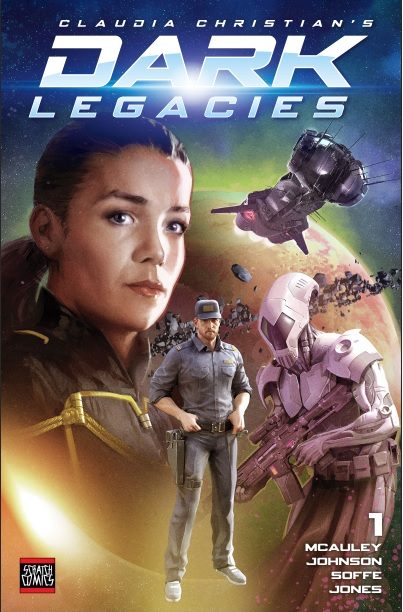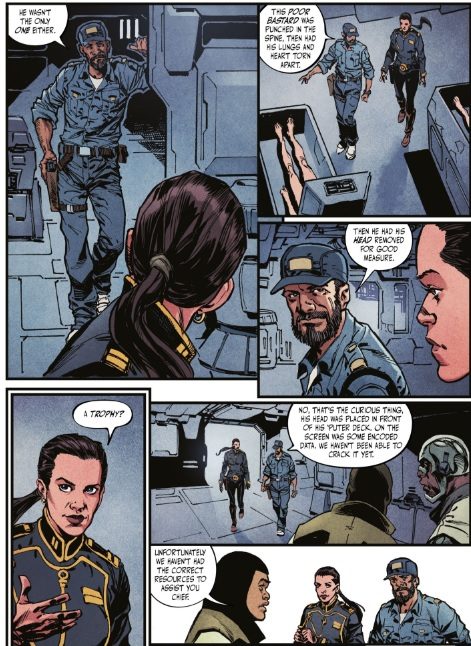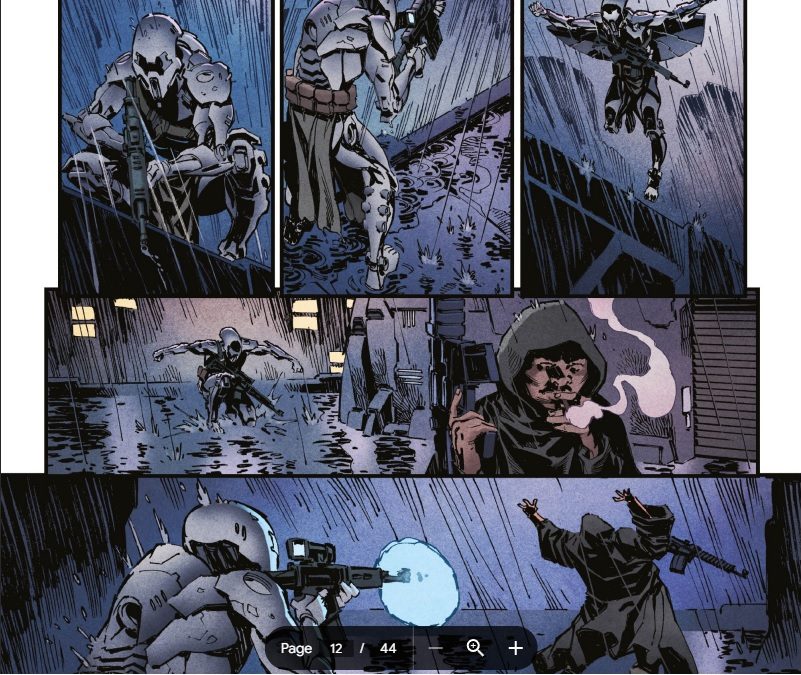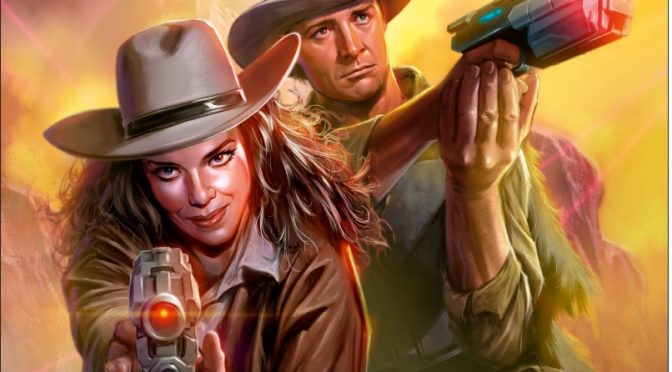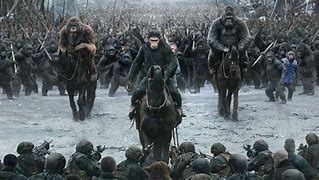As a fan of the 1968 Planet of the Apes movie, and even the first sequel, I’ve watched the revamping of the franchise with interest. Between career drama, family tragedy, and other distractions in my personal life, I missed this film’s release in 2017 and was not even aware of its existence until a few days ago.
Of course I had to watch it.
What it’s About:
After the events depicted in Dawn of the Planet of the Apes, Caesar has led his fellow smart apes into the woods and established a secret colony there. At the beginning of this film, the evil humans (who apparently have nothing better to do) find the colony and intend to commit genocide against them.
Caesar needs to move the entire colony away quickly to a new settlement where they won’t be found, but breaks off from them to undertake his own revenge mission. To avoid spoilers, suffice it to say that from there, the plot builds toward a climactic battle at the end.
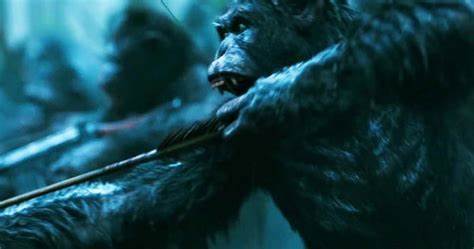
Who Directed this Thing?
Upon looking up director Matt Reeves on InfoGalactic, I was shocked to discover he is Generation X. For reasons that might occur to you while reading the rest of this review, I would have guessed Boomer–specifically a draft-dodging “campus activist” Boomer who probably still has a North Vietnamese flag tacked to his wall. I can only speculate about this: Maybe Reeves is a Boomer wannabe. Perhaps, like me, he grew up immersed in Boomer culture and, unlike me, adopted all of it as his own. (Full disclosure: I still love a lot of Boomer music and some of the American cars manufactured during their rising adult years are still my favorites. In fact, some of my best friends are Boomers.)
Cringe Factor:
The older I get, the more of a problem I have with cruelty to animals. The newest Ape movies have been hard to watch because there is so much of it. And, just like so many pinko directors before him, Reeves uses our empathy for the ape characters in an attempt to make us buy in to his themes and worldview.
On several occasions I felt like apologizing to my dog on behalf of all human beings. He sat watching me, waiting for me to turn off the TV and play with him–much less upset about human cruelty than I was.
Technical Ineptitude:
The screenwriter and director know absolutely nothing about the military, other than what they’ve seen in other movies and TV shows. Which is to say: damn little.
And that’s fine–as long as they steer clear of projects that depict military units and personnel. When film makers make their predictably half-assed effort, it grates on me
Hey, Spielberg is a leftist Boomer who (along with George Lucas) probably has a North Vietnamese flag tacked to his wall. But at least he hired an advisor for Saving Private Ryan so he didn’t vomit his ignorance all over the screen for the entire movie. There were moments when he obviously vetoed the experts’ advice, for the sake of dramatic tension and such. Because Hollywood Boomer. Can’t get your expectations too high with that crowd. And this movie reminded me that Boomer director Francis Ford Coppola actually did a commendable job depicting soldiers at war (for a draft-dodging Boomer, anyway).
Dismissing exceptions like Spielberg and Coppola, when it comes to draft-dodging Boomers who make movies about war, there are two camps: those who believe the US armed Forces is comprised solely of the Marine Corps, and those who believe every swinging Richard in the military is Special Forces. Reeves was obviously discipled by the latter camp.
The evil humans are led by Woody Harrelson playing his own version of Colonel Kurtz from Apocalypse, Now! Dude shaves his head and listens to Jimmi Hendrix while planning an idiotic defensive battle against other evil humans who believe his methods are unsound and are coming to terminate his command, with extreme prejudice. At least there was no monologue about watching a snail crawl along the edge of a straight razor.
The “Special Forces” officers and men under his command demonstrate the tactical acumen of a young boy playing with plastic army men. (Maybe the real deal is like that these days. I know the standards have been plummeting across the board as good soldiers have been chased out to open slots for freaks, perverts, womyn and diversity hires.)
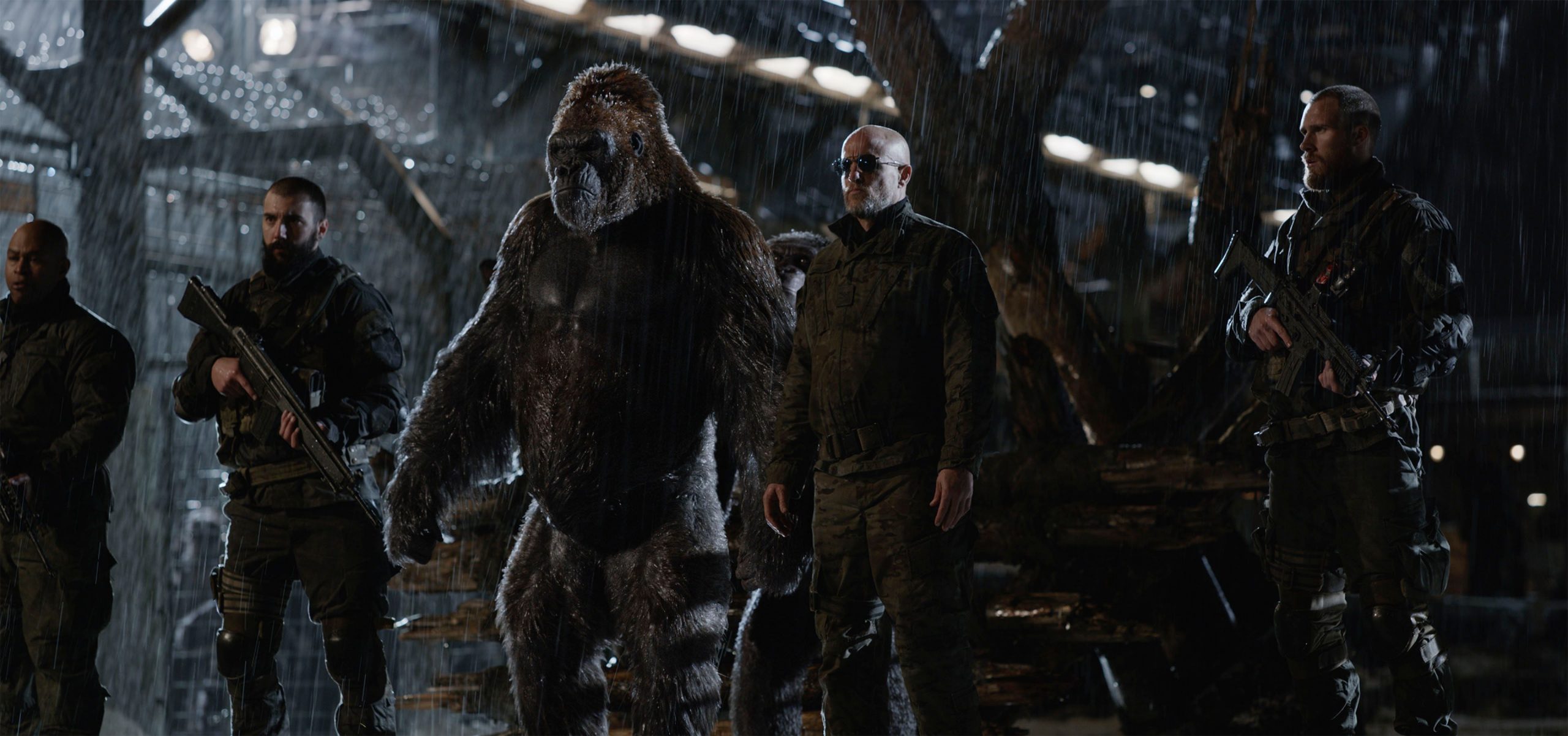
However, the movie’s human soldiers do have magic ghost-ninja powers that allow them to repeatedly and easily sneak up and get the drop on the apes, who apparently lost their animal survival instincts, hearing, sense of smell, and developed one whale of a myopia in their vision. At least for the parts of the story that require such handicaps. In fact, these seasoned, professional SF A-Team operators can even have hysterical conversations about 30 yards from an ape listening post and not be discovered.
There’s a lot more I could complain about on this subject, but that would make this a loooooong post.
Theme, Etc:
Much like a Stanley Kubrick film, the big question the screenwriter/director wants you to ask is, “Who actually demonstrates humanity in this story?” Hint: it ain’t the humans.
I give the filmmakers props for driving this theme home with a couple shots of soldiers showing themselves to be more feral than the apes with the motivational mass command and hoowah-ing that grunts are conditioned to perform (but Special Forces soldiers do not, unless their ranks are filled with guys from the Ranger Battalions). They sounded more like apes than the apes, and this is the closest the movie ever gets to verisimilitude from a military perspective.
Humans are barbaric savages who would rather lose a battle and be wiped out than to miss an opportunity to murder some escaping, unarmed apes. Like the gorilla traitors they employ as “donkeys,” humans are fanatical killers who will follow idiotic orders blindly without question, but are incapable of empathy, gratitude, fair play, or any sort of decency. Except for Nova, who is a young girl in this movie.
Caesar, Luca, Rocket and the other apes are the only characters (besides Nova) who have any humanity.
This movie really comes off like yet another symbolic summary of Vietnam, as told by a communist propaganda minister–like Little Big Man, Soldier Blue, Return of the Jedi, and Avatar.
Everything you’ll see here has been done before many times. There is no part of this movie that suffers from any modicum of originality.
The acting is fine and the musical score is competent. All the elements of filmmaking come together to sadden, depress, disturb and/or infuriate you over the mistreatment of the apes. And that is pretty much all this film is good for.
